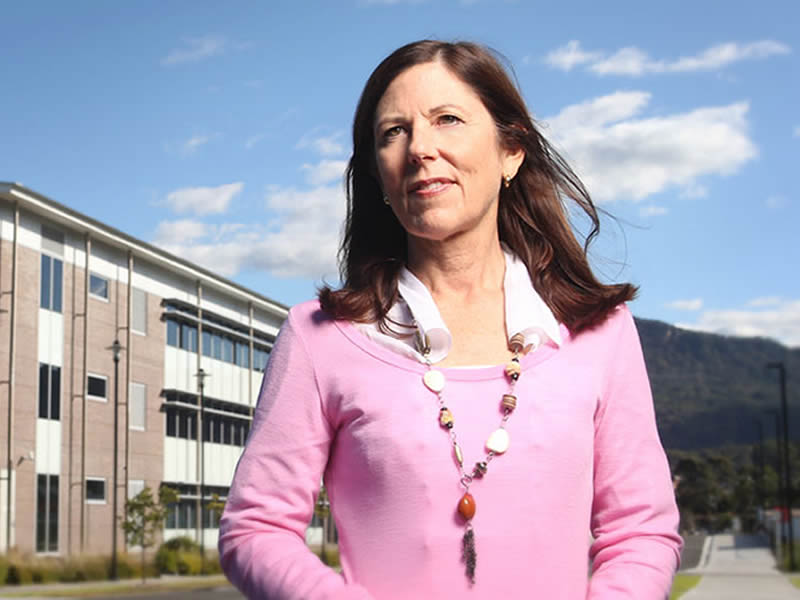The CSIRO has been told where to prioritise its efforts and what the government expects from it; in return it has been promised a modest $115 million increase in funding over the next four years.
Over the weekend Greg Hunt, minister for industry, innovation and science, released his Statement of Expectations contained in a letter to CSIRO chairman David Thodey.
That statement notably demands that the organisation restores its research focus on climate science which CSIRO CEO Dr Larry Marshall partially dismantled earlier this year. There is also to be a focus on agriculture, food and biosecurity, environmental and sustainability issues, astronomy and manufacturing.

Information technology wasn’t overlooked and Mr Hunt said he expected CSIRO and sister agency Data61 to collaborate with industry to improve the nation’s digital and data management capabilities.
The Statement calls on Data61 to partner with private and public sector partners “to capitalise on the data revolution”.
Among the expectations he set for Data61 were for it to connect government datasets and publicly release them on an open data platform, increase industry cybersecurity capability, build a Digital Research Network (D61+) to link business with data researchers, and to improve the data literacy of Australian businesses.
CSIRO will also be expected to continue working on its AcceleratiON program to spur entrepreneurship and commericalisation activities within the organisation. CSIRO general manager of strategy, market vision and innovation Dr Elizabeth Eastland, leads that initiative.
When appointed in May Dr Eastland was also charged with guiding the strategic direction of the agency and began investigating the organisation’s strengths, the natural biases of Australia, and its global opportunity.
Dr Eastland declined to speak to InnovationAus.com about the Statement of Expectations and how closely it meshed with her analysis of where the organisation should be investing, noting that CSIRO would not be making any public comment until after its board meets.
The next board meeting is slated for December, meaning the CSIRO Statement of Intent – which traditionally follows the Minister’s Statement of Expectations – could take well into 2017 to emerge.
When then minister Ian Macfarlane issued his Statement of Expectations in February last year, CSIRO took until August to release its response.
Mr Macfarlane’s statement was far less prescriptive than Mr Hunt’s, and only signalled that he expected CSIRO to support Australian industries in areas where the nation had traditionally had some advantage and where it might spur Australian competitiveness.
The CSIRO Staff Association, which is still deadlocked with the organisation over a proposed enterprise agreement, believes that the far more prescriptive nature of this Statement of Expectations signals that the government has put the CSIRO leadership “on a relatively short leash.”
Following a public outcry about Dr Marshall’s decision to shift away from basic climate change research, CSIRO asked Ernst & Young to review its Science Prioritisation and Implementation process.
That review revealed significant problems and shortcomings which the agency said it would address.
There is however a big bridge to build between the leadership of the CSIRO and its rank and file.
A spokesman for the Staff Association nevertheless cautiously welcomed the Statement of Expectations.
He said that the Minister had involved a wide range of stakeholders in discussions when shaping the Statement adding that the Expectations themselves were “generally positive, with a significant change of rhetoric and it seems to point to a change in priority.”
Minister Hunt said that it was the government’s intention that “staffing levels will rise and funding for CSIRO will increase from $1.35 billion to $1.465 billion over the next four years.”
While the increase was welcome, the Staff Association spokesman said that in real terms there had been no growth in funding over the last three decades, and that CSIRO’s workforce had contracted by 20 per cent since 2013.
“You can’t rebuild capacity overnight – but you can lose it overnight” he said, adding that any cuts made to CSIRO recently had been directly into the bone as there had been no fat left to lose.
What is certainly to be welcomed in the Statement of Expectations is a return of plain English to define research priorities rather than more meaningless gobbledegook.
In September during an address at the CSIRO’s 100 year gala dinner Mr Hunt confirmed that there would be an increase in the organisation’s “blue sky” science funding to $52 million by 2019-20.
That was to fund CSIRO’s six Future Science Platforms – which the agency had defined opaquely as “probing biosystems, digiscape, synthetic biology, environomics, deep earth imaging and advanced integrated materials.”
The priorities Mr Hunt identified in the Statement of Expectations were set out in much plainer language. It will not be possible to hide behind strange portmanteau words such as digiscape or environomics because he wants CSIRO:
- pioneering in plant biology and agriculture;
- enabling development of new research and technologies for human health, food and nutrition, and biosecurity;
- leading climate change science, mitigation and adaptation research, including decadal forecasting as part of the work of the Climate Science Centre;
- developing new environmental research and technologies for air, land, water and oceans;
- collaborating with industry to help sustainably manage resources, mining equipment and energy sectors;
- collaborating across the research community to maintain and build our astronomy capability;
- collaborating with industry to help develop our advanced manufacturing capabilities; and
- collaborating with industry to improve Australia’s digital and data management capabilities.
Do you know more? Contact James Riley via Email.

